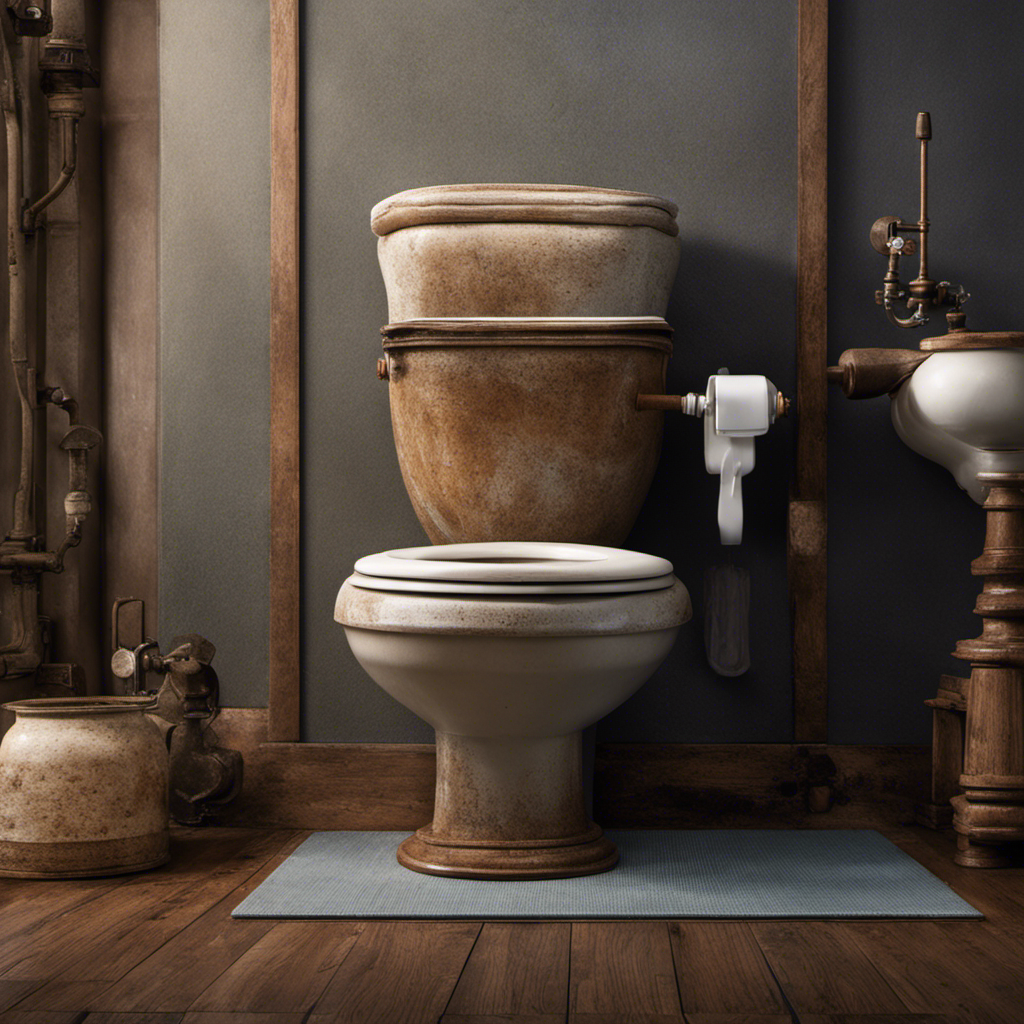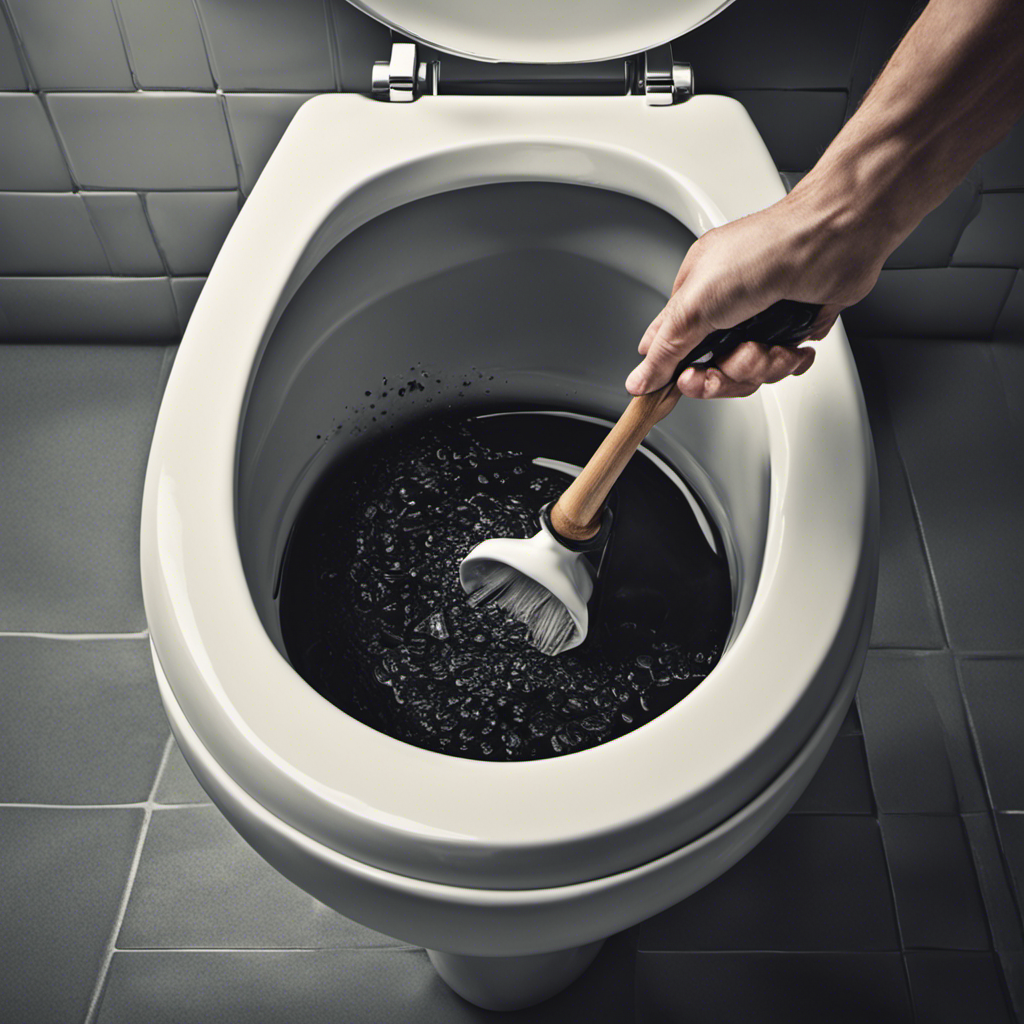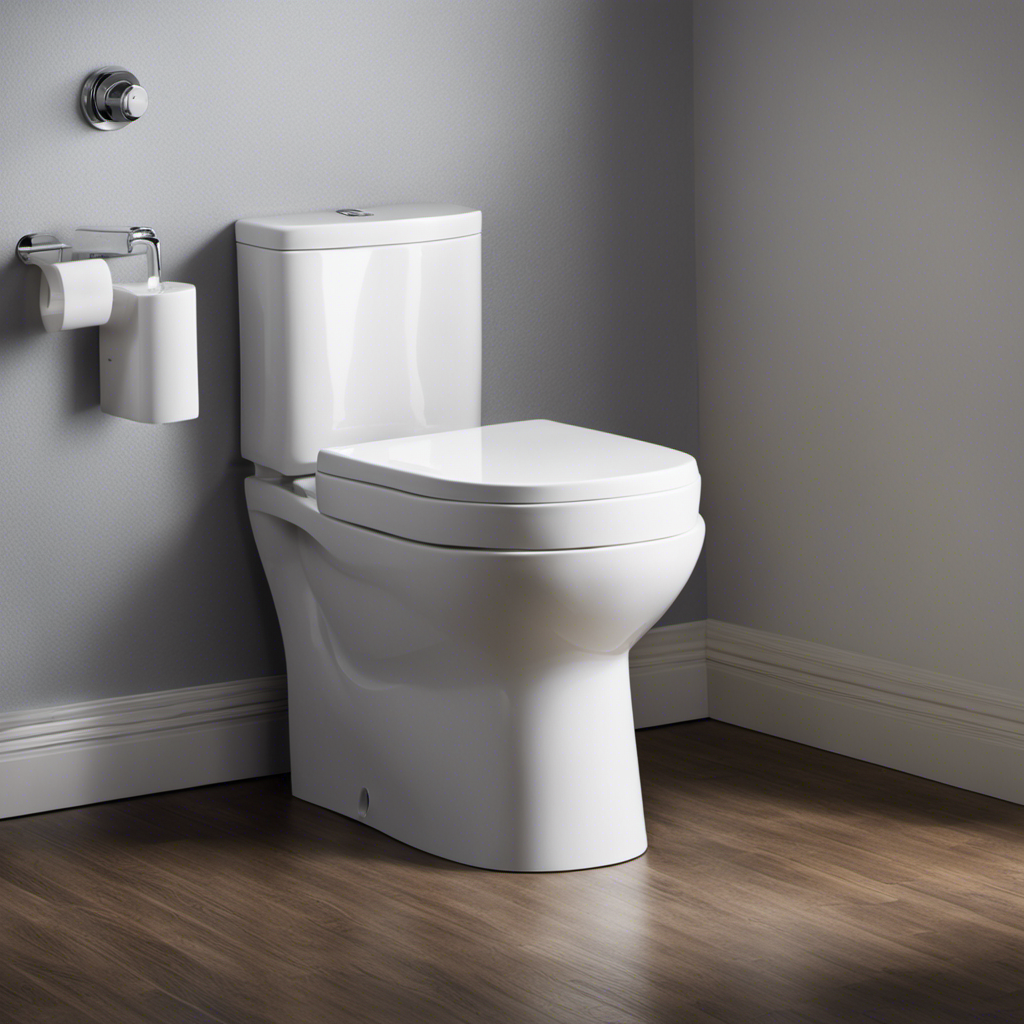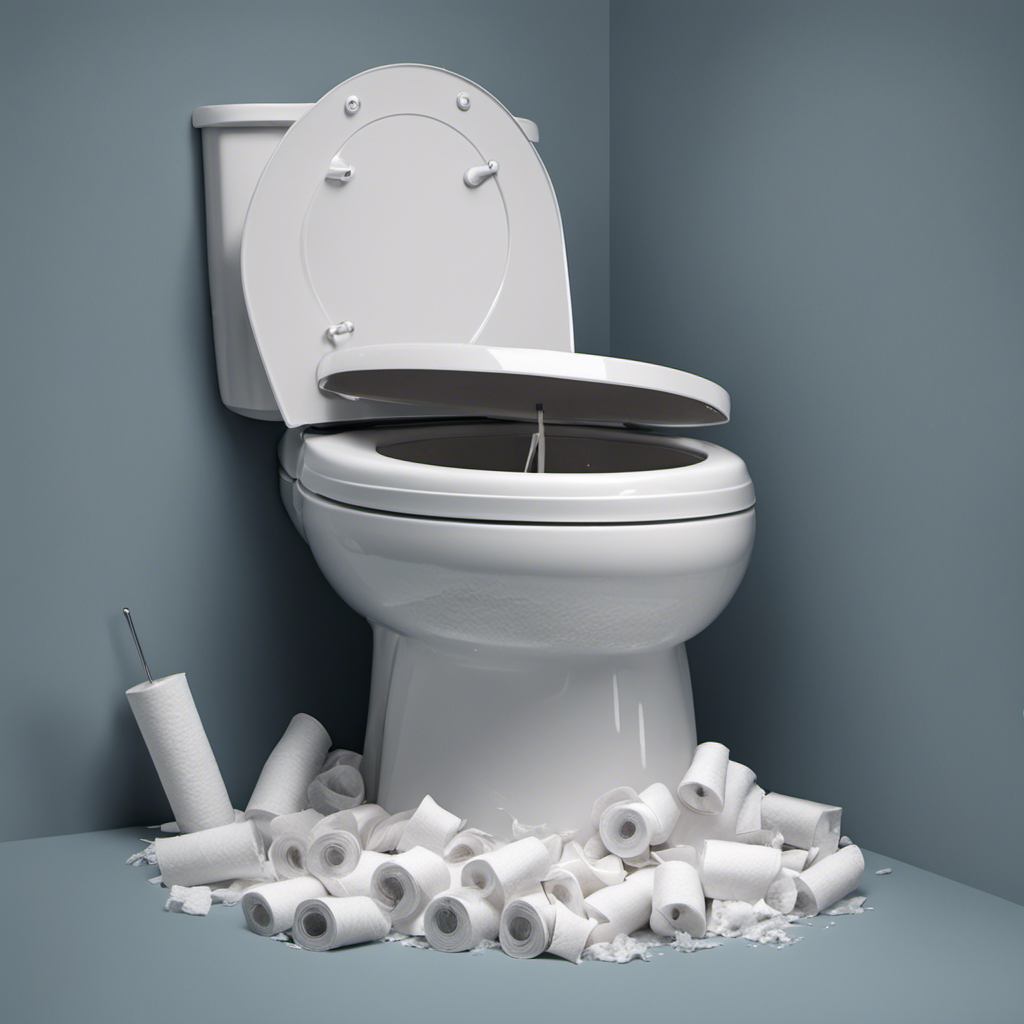I’ve been there before – staring at a toilet that just won’t fill with water. It’s frustrating and inconvenient, especially when you need to use it urgently.
Did you know that a faulty fill valve is the leading cause of this issue, accounting for 80% of cases? In this article, I’ll guide you through the common causes of a toilet not filling, including how to troubleshoot a malfunctioning float switch and a clogged water supply line.
Let’s get your toilet back up and running smoothly!
Key Takeaways
- The leading cause of a toilet not filling with water is a faulty fill valve.
- Low water pressure can limit the amount of water entering the tank and cause incomplete filling.
- Troubleshooting a faulty fill valve involves checking the water supply valve, inspecting the fill valve for damage, and considering replacement options.
- A clogged water supply line can also prevent the toilet from filling with water, and it may need to be cleared to restore proper water flow.
Common Causes of Toilet Water Not Filling
One of the most common causes of a toilet not filling with water is a faulty fill valve. The fill valve is responsible for regulating the water flow into the toilet tank after a flush. If it malfunctions, it can prevent water from entering the tank, resulting in an empty or partially filled toilet bowl.
To troubleshoot issues with the toilet flush handle, check if it is properly connected to the fill valve. Sometimes, a loose or broken handle can hinder the filling process.
Another possible cause is water pressure problems. Low water pressure can limit the amount of water that enters the tank, leading to incomplete filling. In such cases, it may be necessary to check the water supply line and ensure it is fully open and functioning properly.
Faulty Fill Valve: A Possible Culprit
A faulty fill valve might be causing the issue with your toilet. Here are some troubleshooting steps to help you identify and resolve the problem:
-
Check for water supply: Ensure that the water supply valve is fully open. If it’s partially closed, it can restrict water flow to the fill valve.
-
Inspect the fill valve: Look for any visible signs of damage or wear on the fill valve. Cracks, leaks, or mineral buildup can affect its performance.
-
Consider replacement options: If the fill valve is faulty, you may need to replace it. There are various replacement options available, including adjustable and universal fill valves. Choose one that is compatible with your toilet model.
Clogged Water Supply Line: Is It the Issue
Check if the clogged water supply line is causing the issue with your toilet. If your toilet is not filling with water, it could be due to a blocked pipe.
One common cause of a clogged supply line is low water pressure. When the water pressure is insufficient, it can lead to a blockage in the pipe, preventing water from flowing into the toilet tank.
To check for a clogged supply line, first, turn off the water supply valve behind the toilet. Then, disconnect the supply line from the toilet tank and place the end in a bucket. Turn on the water supply valve and observe if water flows freely into the bucket.
If there is no water or the flow is weak, you may have a blocked pipe that needs to be cleared to restore proper water flow to your toilet.
Malfunctioning Float Switch: What to Check
If the float switch isn’t working properly, it could be causing issues with the water level in your toilet tank. To troubleshoot toilet filling issues related to a malfunctioning float switch, here are some steps you can take:
-
Check for physical damage: Inspect the float switch for any signs of damage such as cracks or corrosion. If you notice any, you may need to replace the switch.
-
Adjust the float level: The float controls the water level in the tank. If it’s set too low, the tank may not fill properly. Adjust the float so it sits at the correct level.
-
Clean the float switch: Over time, debris and mineral deposits can accumulate on the float switch, affecting its function. Clean the switch using a mixture of vinegar and water to remove any buildup.
Other Potential Reasons for a Toilet Not Filling
To resolve the issue, you might want to consider inspecting the water supply valve for any potential problems.
However, if the water supply valve seems to be functioning properly, there are a few other potential reasons why your toilet might not be filling with water.
One possible reason could be a blocked pipe. If there is a blockage in the pipe that carries water to the toilet, it could prevent the water from reaching the tank and filling it up.
Another potential reason could be low water pressure. If the water pressure in your plumbing system is too low, it may not be strong enough to fill the toilet tank. In this case, you may need to contact a plumber to help diagnose and fix the issue.
Conclusion
In conclusion, when faced with a toilet not filling with water, it’s crucial to investigate the possible causes.
A faulty fill valve may be to blame, causing a disruption in the water flow.
Additionally, a clogged water supply line could be hindering the filling process.
It’s also important to check the float switch for any malfunctions.
Lastly, there may be other potential reasons for the toilet not filling.
By understanding these possibilities, one can diagnose and resolve the issue effectively.










